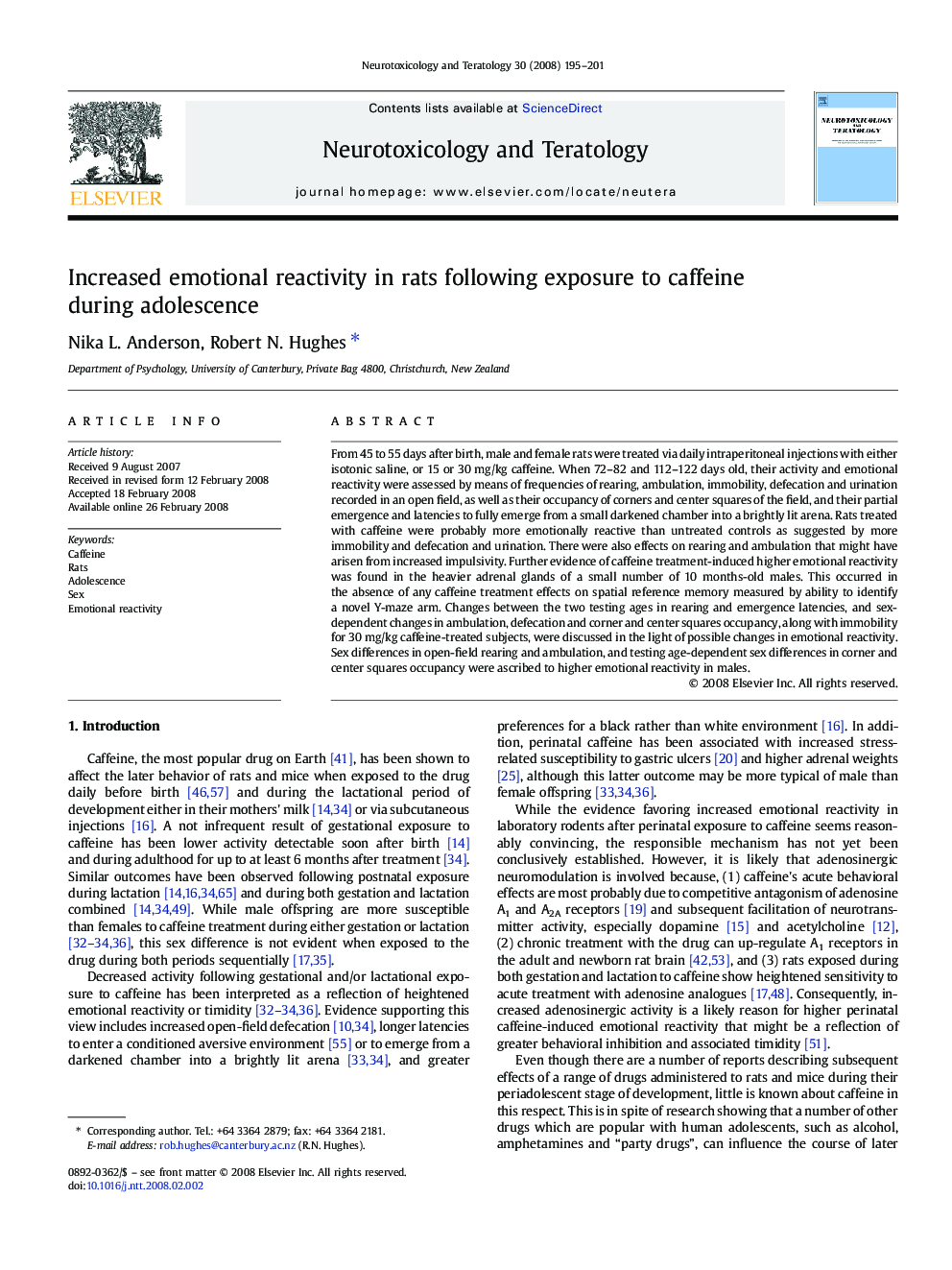| Article ID | Journal | Published Year | Pages | File Type |
|---|---|---|---|---|
| 2592075 | Neurotoxicology and Teratology | 2008 | 7 Pages |
From 45 to 55 days after birth, male and female rats were treated via daily intraperitoneal injections with either isotonic saline, or 15 or 30 mg/kg caffeine. When 72–82 and 112–122 days old, their activity and emotional reactivity were assessed by means of frequencies of rearing, ambulation, immobility, defecation and urination recorded in an open field, as well as their occupancy of corners and center squares of the field, and their partial emergence and latencies to fully emerge from a small darkened chamber into a brightly lit arena. Rats treated with caffeine were probably more emotionally reactive than untreated controls as suggested by more immobility and defecation and urination. There were also effects on rearing and ambulation that might have arisen from increased impulsivity. Further evidence of caffeine treatment-induced higher emotional reactivity was found in the heavier adrenal glands of a small number of 10 months-old males. This occurred in the absence of any caffeine treatment effects on spatial reference memory measured by ability to identify a novel Y-maze arm. Changes between the two testing ages in rearing and emergence latencies, and sex-dependent changes in ambulation, defecation and corner and center squares occupancy, along with immobility for 30 mg/kg caffeine-treated subjects, were discussed in the light of possible changes in emotional reactivity. Sex differences in open-field rearing and ambulation, and testing age-dependent sex differences in corner and center squares occupancy were ascribed to higher emotional reactivity in males.
